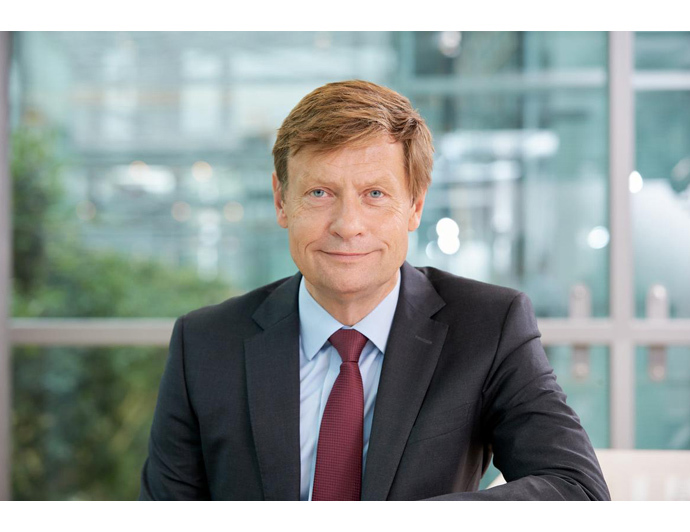Thomas Thune Andersen, Chair of the Board of Danish energy company Ørsted, talks to Susanne Thorning-Lund, Partner and senior member of the Board Practice, about the company’s extraordinary green energy transformation and offers advice to organizations embarking on a similar journey.
Susanne Thorning-Lund: Ørsted underwent an extraordinary transition from a state-owned oil and gas company to global leader in green energy. What were the top three enablers that helped make this happen?
Thomas Thune Andersen: First, we were on a ‘burning platform’. We had too many disparate commercial activities, so we were breaking down as an organisation. The status quo was not an option, and a radical change was required. Second, we had a vision of where we wanted to go and a true and strong belief in a world that runs entirely on green energy. The third enabler was luck. When it came our way, we embraced it. You can’t underestimate the importance of that.
STL: What advice would you give to organizations that want to embark on a similar journey?
When you cross a river, remove the steppingstones as you go. It’s so tempting in the middle of a radical change to back track. Burn the bridge behind you so that you have no choice but to move forward.
TTA: Secondly, in addition to having an intellectual commitment to your strategic direction, embed it in your heart. If you do not speak from the heart with passion and purpose, it’s difficult to bring your organization, your supply chain and everyone else along with you.
Finally, there is still a tendency in the boardroom and among top management to be wary of big transformations. But your employees, shareholders, and customers are already on board. You don’t need to convince them! Don’t be afraid to push ahead.

STL: Has your success in offshore wind made you less risk averse about investing in new sources of green energy such as renewable hydrogen?
TTA: No. But the journey we have been on with wind energy has given us confidence that big changes are achievable. Everyone said it couldn’t be done, which makes it even more fun when you succeed! Even so, you can only be successful if you are able to articulate your risk profile whether that’s financial, political, health and safety or something else.
The biggest challenge we faced was that we didn’t have anyone on the board who could tell us, from experience, that offshore wind would be a success. We had to prove the business case because, certainly at the scale we were looking at, we were the only ones doing it.
Everyone from our traditional competitors to financial institutions to equipment manufacturers believe green hydrogen is a pathway to accelerated energy transformation and are investing in it, and that’s a positive thing. It also creates a totally different risk profile and a totally different competitive situation to the one we had with offshore wind. It means more technology will be developed and tested faster, so some risks are reduced while new risks are coming into play.
STL: What measures would you encourage boards to adopt to achieve greater net-zero fluency?
TTA: Every company has to do things in the way that is right for them, but one piece of advice is to not get hung up on competing sustainability measures and methodologies. Think first about what you want to achieve, whether that’s improving your own sustainability footprint or optimizing your products and services to help your customers achieve their sustainability goals. Once you’ve articulated what you want to achieve, support that with measures that fit.
STL: How can organizations inspire their supply chain partners to embark on their own green transformations?
TTA: Holding each other accountable is the way to reach our environmental goals, rooted in science-based climate targets. Both a carrot and stick (or sledgehammer!) approach can be used. Set targets and if a supplier doesn’t meet them, give them a warning but ultimately be prepared to disqualify them. And be prepared to accept the consequences that come with that, such as increased costs. Having said that, Ørsted doesn’t just demand that our suppliers meet stringent requirements without assistance. We ask them what they need to succeed and, where possible, help them create a plan to get there or even co-invest in technology with them.
The good news is, we and others who were there in the beginning, have proven the world can run on green energy. Five years ago, there was a lot of lobbying against the movement, but the needle has moved.
Now almost everyone is on board, it’s just a question of how fast we can get there. My hope is that we can work together towards common goals. If people want too many different things, it can become a political battle between competing interests. We need to focus on the changes that can make the biggest impact and adopt the legal and physical infrastructure to achieve them.
Everyone is focused on this issue now, so I really believe the vision to run the world entirely on green energy is absolutely feasible.
STL: Has your environmental mission changed your relationship with your employees?
TTA: Yes. A purpose-driven organization attracts people in a different way than a purely profit-driven business. Having a strongly held belief in transforming the world for the better creates a powerful sense of belonging and attracts a more diverse group of people, which translates into better ideas and results. Interestingly, while initially a lot of ideas came from the top down, an increasing number of ideas about how to change the world are now coming from the bottom up. Being a purpose-led company creates a lot of energy and puts more spice in the soup.
Tak skal du have (thank you), Thomas, for sharing your transformation journey and this inspiring message!
Subscribe to our newsletter to receive our regular OBSERVE updates:
Error loading Partial View script (file: ~/Views/MacroPartials/CtaBox.cshtml)


